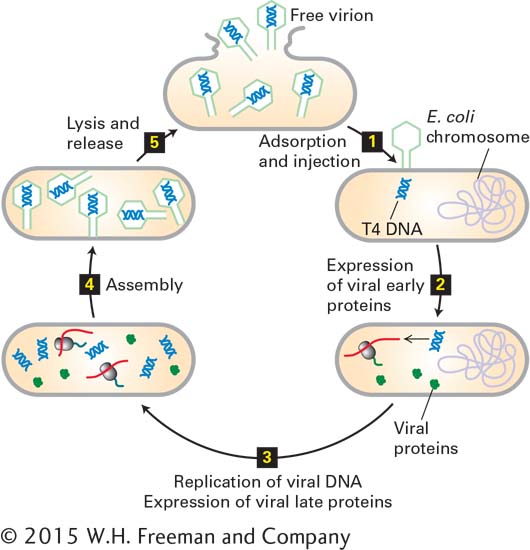
FIGURE 5- 45 Lytic replication cycle of a nonenveloped bacterial virus. E. coli bacteriophage T4 has a double- stranded DNA genome and lacks a membrane envelope. After viral capsid proteins at the tip of the tail in T4 interact with specific receptor proteins on the exterior of the host cell, the viral genome is injected into the host (step 1). Host- cell enzymes then transcribe viral “early” genes into mRNAs and subsequently translate these mRNAs into viral “early” proteins (step 2). The early proteins replicate the viral DNA and induce expression of viral “late” proteins by host- cell enzymes (step 3). The viral late proteins include capsid and assembly proteins and enzymes that degrade the host- cell DNA, supplying nucleotides for synthesis of more viral DNA. Progeny virions are assembled in the cell (step 4) and released (step 5) when viral proteins lyse the cell. Newly liberated viruses initiate another cycle of infection in other host cells.
[Leave] [Close]